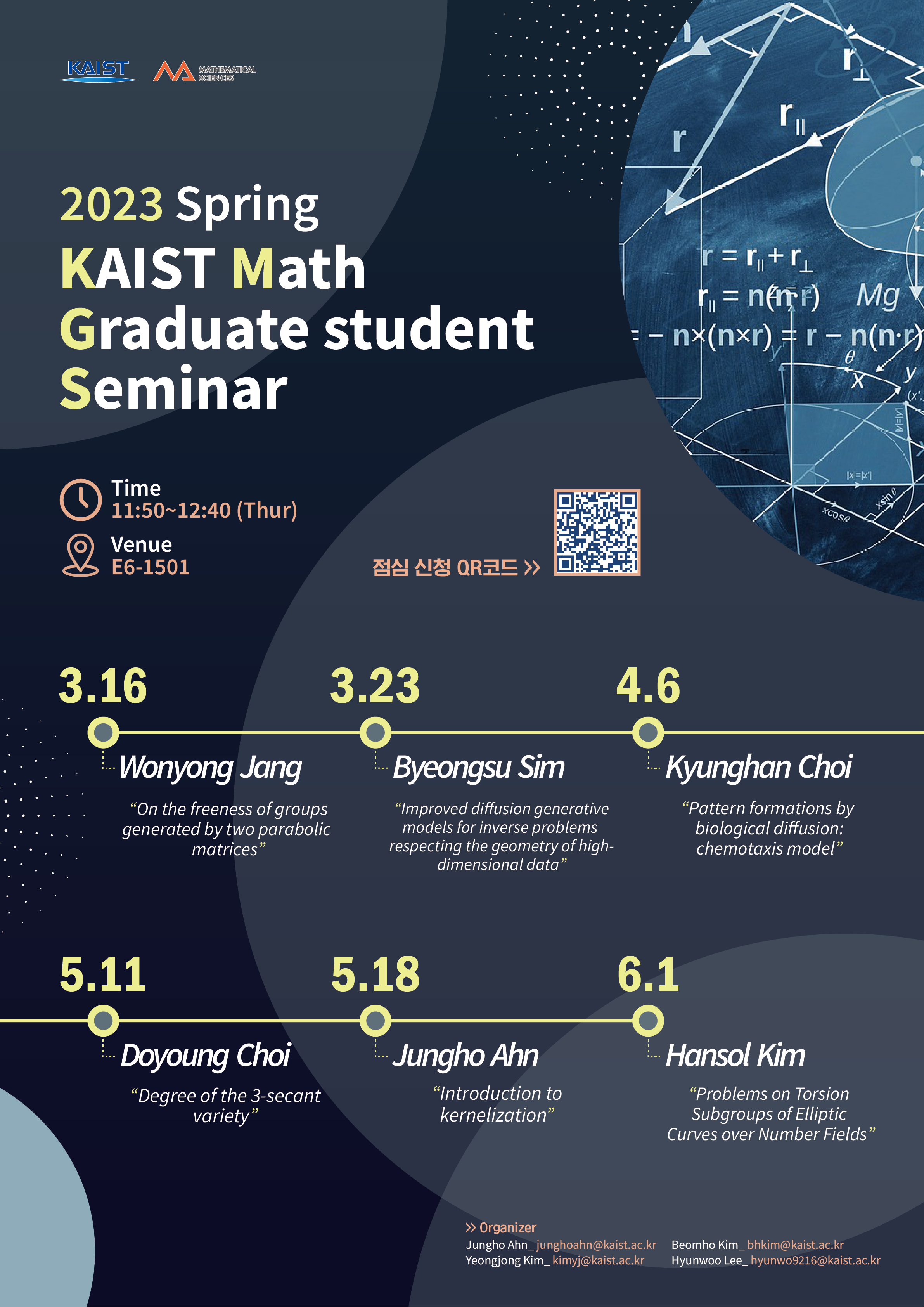The 8th KMGS will be held on May 26th, Thursday, via Zoom and Gather Town.
We invite two speakers, Jaehoon Lee from the Dept. of Mathematical Sciences, KAIST, and Hyukpyo Hong from the Dept. of Mathematical Sciences, KAIST and IBS Biomedical Mathematics Group (BIMAG).
The abstract of the talks are as follows.
1st slot (PM 12:00~12:20)
[Speaker] Jaehoon Lee (이재훈) from the Dept. of Mathematical Sciences, KAIST, supervised by Prof. Paul Jung (폴 정 교수님)
[Title] Spectrum of sparse random graphs and related problems
[Discipline] Probability
[Abstract]
Around early 2010, there was a huge success in understanding the spectrum of large random matrices, in other words, large random graphs. It was only for large but dense random graphs at first. However, as random matrix theory has been developed, there is some progress in sparse cases. In this short talk, I will review a series of results for spectral statistics of sparse random graphs and explain their implications.
[Language] Korean (English if it is requested)
2nd slot (PM 12:25~12:45)
[Speaker] Hyukpyo Hong (홍혁표) from the Dept. of Mathematical Sciences, KAIST and IBS Biomedical Mathematics Group (BIMAG), supervised by Prof. Jae Kyoung Kim (김재경 교수님)
[Title] Deriving Stationary distributions from an underlying graph structure
[Discipline] Mathematical Biology
[Abstract]
Randomness of biochemical reactions is inherent in various biological systems, from DNA to organs and the human body. These stochastic dynamics are frequently modeled using a continuous-time Markov chain (CTMC). Its long-term behavior is described by a stationary distribution, corresponding to its deterministic counterpart called a steady state. Stationary distribution can be derived analytically only in limited systems such as linear or finite-state systems. In this talk, I will introduce a recent result by Anderson, Craciun, and Kurtz deriving stationary distribution from the underlying graph structure of a reaction network and how we can extend it. For those who are first told the word ‘Mathematical Biology,’ I will briefly introduce mathematical biology before going into the detailed topic.
[Language] Korean (English if it is requested)
[Zoom link]
https://kaist.zoom.us/j/2655728482?pwd=OXpJeFdDcWliSG51WUp0N1Nad2JHdz09
ID: 265 572 8482
Password: 2AHRKr
[Gather Town link]
https://gather.town/app/ffr2PVibAWRIyXWO/kaistmath

